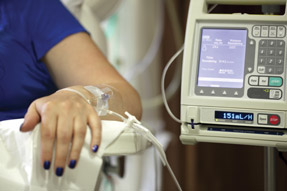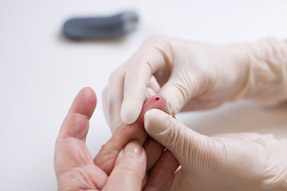New antibiotics may change inpatient skin infection treatment
Physicians have a few new drugs in their armamentarium for skin and soft-tissue infections.
There's been a rash of antibiotic approvals for skin and soft-tissue infections in recent months.
First, dalbavancin (brand name Dalvance) was approved by the FDA in May. Then, in June, came tedizolid phosphate (Sivextro) and finally, in August, oritavancin (Orbactiv). Add to that an updated guideline issued by the Infectious Diseases Society of America (IDSA) in June, and there are a lot of changes to incorporate into inpatient treatment of skin and soft-tissue infections.

Figuring out which patients could benefit from these new drugs, and potentially avoid or shorten their hospital stays, may be the biggest challenge, experts said. They offered advice and analyses of the new data and guidelines to help physicians optimize therapy for skin and soft-tissue infections.
What are they?
Although the drugs are new, they are not entirely unfamiliar. “The 3 new antibiotics that were approved in the last few months are relative compounds to things that are currently available,” said Warren Rose, PharmD, an associate professor of pharmacy at the University of Wisconsin in Madison who researches antibiotics.
Dalbavancin is an analogue of teicoplanin and oritavancin is an analogue of vancomycin, and both are administered intravenously (IV). Tedizolid is an oxazolidinone, similar to linezolid, that comes in IV and oral formulations.
To gain approval, the drugs were tested against vancomycin and/or linezolid and found to be noninferior (according to results published in the June 5 New England Journal of Medicine and the Feb. 13, 2013, Journal of the American Medical Association). “The studies really show you that the drugs that are being approved for skin and soft-tissue infections have a similar efficacy rate compared to what we're currently using,” said Dr. Rose.
What makes the new drugs interesting is their dosing. Dalbavancin is given as an injection once weekly for 2 weeks, and oritavancin is injected just once.
“The advantage of these antibiotics is that you can administer a parenteral agent as a single injection and eliminate the need for a hospitalization or shorten a hospitalization, and not have to futz with putting in a [peripherally inserted central catheter] or worry about compliance as you might if you switch to oral therapy,” said Henry F. Chambers, MD, FACP, a professor of infectious disease at the University of California San Francisco and an author of the IDSA guidelines.
Tedizolid also differs from its predecessor in that it is given for only 6 days. “That gives the opportunity to transition patient care from inside the hospital after a day or so with IV administration,” said Steven C. Gilman, PhD, executive vice president and chief scientific officer at Cubist Pharmaceuticals, which manufactures the drug.
Dr. Chambers described how the reducing the frequency of therapy could change the pattern of hospitalizations. “The patient comes in, they have a fairly severe skin and soft-tissue infection. You give them a dose of the drug, keep them in for a day, perform the surgical procedure the next day, see that they stabilize, and then you can discharge them, and you've completed therapy,” he said.
Less sick patients might avoid hospitalization entirely. “[Patients] can get [the new drugs] in the emergency department, by a half-hour or 3-hour infusion, use a little observation, and see if they need to be admitted,” said Dr. Rose.
Cost concerns
Of course, no innovation comes without a price, and in the case of the new drugs, it's their cost. “Without a doubt, they're not going to be as cheap as the generic drugs they currently use for skin and soft-tissue infections,” said Dr. Rose.
Tedizolid is priced at $235 for a day's treatment, compared to $279 for linezolid, according to a recent analysis by The Medical Letter, a nonprofit organization that publishes critical appraisals of new prescription drugs and comparative reviews of previously approved drugs. According to the same analysis, dalbavancin will cost $1,490 per 500-mg dose, of which a patient doing the full studied course of treatment would need 3. Oritavancin's price has not been announced yet, but it is likely to be similar to dalbavancin's.
The new drugs could be cost-effective, however, if they reduce hospitalizations. “You roll in [to the cost] continuous vascular access with or without some monitoring, having to administer a drug on a daily basis, and hospitalization,” said Dr. Chambers. “You could argue if you save a day in the hospital, you've made up your drug acquisition cost.”
That calculation will be complicated by hospital financial structures, he noted. “The pharmacy is worried about the drug acquisition cost, and often these budgets are siloed,” Dr. Chambers said.
In the end, the drugs' use will probably depend on insurers' decisions about them. “What insurances are going to do I don't think is quite known yet,” said Dr. Rose.
Assuming payers add the new drugs to their lists, physicians will need to make decisions about when to use them. “Judicious use of these antibiotics will probably depend on using select criteria to identify which patients would be good candidates for them, either by the infection or the patient's need,” said Dr. Rose.
Dr. Chambers drilled down on appropriate uses of dalbavancin and oritavancin. “They should be used in people that otherwise you would think about admitting to the hospital, or patients who are not likely to be compliant with an oral regimen or can't take oral regimens,” he said. “If they would have done just fine with minimum therapy and trimethoprim/sulfamethoxazole, then [using new drugs instead] will add to the cost.”
Overuse of the new antibiotics would not only drive up health care costs, but the risk of resistance. “We have to use these antibiotics very prudently because there aren't any new antibiotics coming out,” said Jan V. Hirschmann, MD, a professor of medicine and an infectious disease specialist at the University of Washington in Seattle.
The new antibiotics are among the few treatment options for infections resistant to existing drugs, he noted. “We don't want to be using these agents in inappropriate circumstances so resistance emerges and our potential opportunities for treatment become even narrower,” Dr. Hirschmann said.
New guidelines
Appropriate use of antibiotics was a major focus of the IDSA guideline update, of which Dr. Hirschmann was an author. The guidelines didn't diverge dramatically from previous recommendations, but they provided an algorithm for treatment of skin and soft-tissue infections, categorizing them as either purulent or nonpurulent, and then severe, moderate, or mild.
Antibiotics are suggested (although not any of the new ones, since they were FDA-approved after the update was written) for all categories except mild purulent infections. Dr. Hirschmann believes that an even broader group of patients may not need drugs: those who have skin abscesses and fever but aren't clinically ill.
“The final recommendation for the committee was that patients who are moderately ill with a fever, but not with shock or low blood pressure, use an oral antibiotic. But we don't really know that that's necessary,” said Dr. Hirschmann.
To treat these less sick patients, he'd like to see greater use of incision and drainage, which the guidelines recommend for all purulent infections. “Many people receive antibiotics for skin abscesses where it wasn't necessary, and many people receive antibiotics without getting the necessary incision and drainage, so it's a more protracted course,” Dr. Hirschmann said.
To help avoid protracted courses of unnecessary antibiotics, physicians should also work to identify the causative bacteria as soon as possible, and then change treatment of non-drug-resistant infections, advised Dennis L. Stevens, MD, PhD, FACP, chief of the infectious diseases section at the VA Medical Center in Boise, Idaho, and lead author of the guidelines. “We want to de-escalate as soon as possible to a less costly drug and try to preserve the big guns for the future,” he said.
The future may also bring a widening of indications for the new antibiotics, which are currently only approved for skin and soft-tissue infections. Tedizolid is currently being studied as a treatment for nosocomial pneumonia, Dr. Gilman said.
Dalbavancin and oritavancin could potentially be useful for other types of infections that are currently treated in the hospital but don't make patients sick enough to require hospital care. Endocarditis, bacteremia, and bone and joint infections seem like possible future uses, the experts predicted.
“If it's highly effective [against bone infections] and the patient comes in once a week and you give them a shot of drug—5 or 6 doses and you're done—that would really change how we manage those infections,” said Dr. Chambers.
Until these uses are researched, though, clinicians will probably want to stick with the approved indications, especially since some potential adverse effects are uncertain. Initial studies didn't raise any unusual concerns, and the side effects of the new drugs are likely to be similar to related antibiotics. But the long half-lives of dalbavancin and oritavancin could pose issues.
“Once they're on board, there's no getting rid of them, so if the patient were to have a serious allergic reaction or some idiosyncratic adverse event, like their platelets were injured or their white count fell, and the drug is doing it, it's still going to be around for quite a while,” said Dr. Chambers. “There are so few examples of drugs hanging around for such a long period of time that we don't have a context.”




